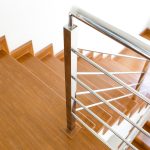Turning is, almost by definition, an operation that depends on technology. It is integral to Computer Numerical Control (CNC) Machining and can be used to create a variety of different pieces. While most people recognize that the process itself is technologically advanced, some may not know that technology figures so prominently in the preparation for actual turning operations, as well. Through planning and execution, turning is more effective and efficient if it is done with state-of-the-art machinery.
Pieces Created by Turning
When thinking about metal pieces, in particular, it’s not too hard to find ones that are made from CNC turning. From small parts like fasteners and couplings to larger pieces like shafts and turbine components, turning can create nearly anything. Turning provides parts for many industries, including the medical and dental industry, aerospace, food industry, electronics, military and more. The only real limitations on the capabilities of CNC turning are the creativity of the designer and the particular type of machinery being used.
Preparation for Turning Operations
Before a piece gets turned or machined on a lathe or other CNC machinery, there first must be a plan. In the early days of turning, the plan might be a simple blueprint that the operator needed to follow to make the part within the specifications. Nowadays, however, this technique is very rare, thanks to CNC technology and machines that are capable of integrating with design software. Software like AutoCAD, Catia or GibbsCAM can create an electronic version of the blueprint, which can then be downloaded directly to the turning machines, allowing them to cut precisely the piece to match the plan.
Turning Machines
Turning operations involve the use of lathes, both engine lathes, and two-axis CNC lathes, but they can also involve 5 axis turning centers and other multi-purpose machines. The advantage of modern technology in a turning machine comes not only from its ability to integrate with the design software but also from its versatility. Modern machines can cut a variety of shapes and sizes, and do long runs of thousands of pieces or short prototyping runs, often with little down time for retooling.







